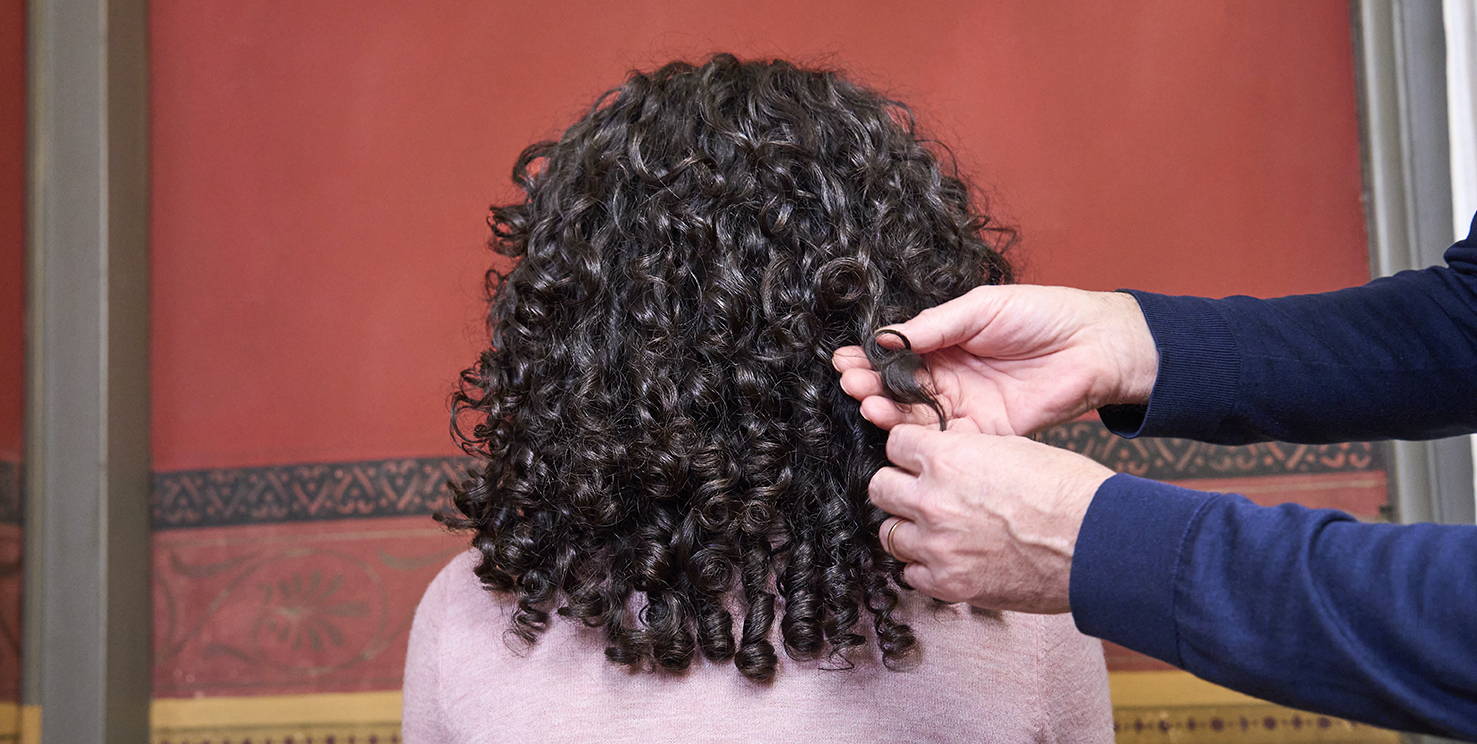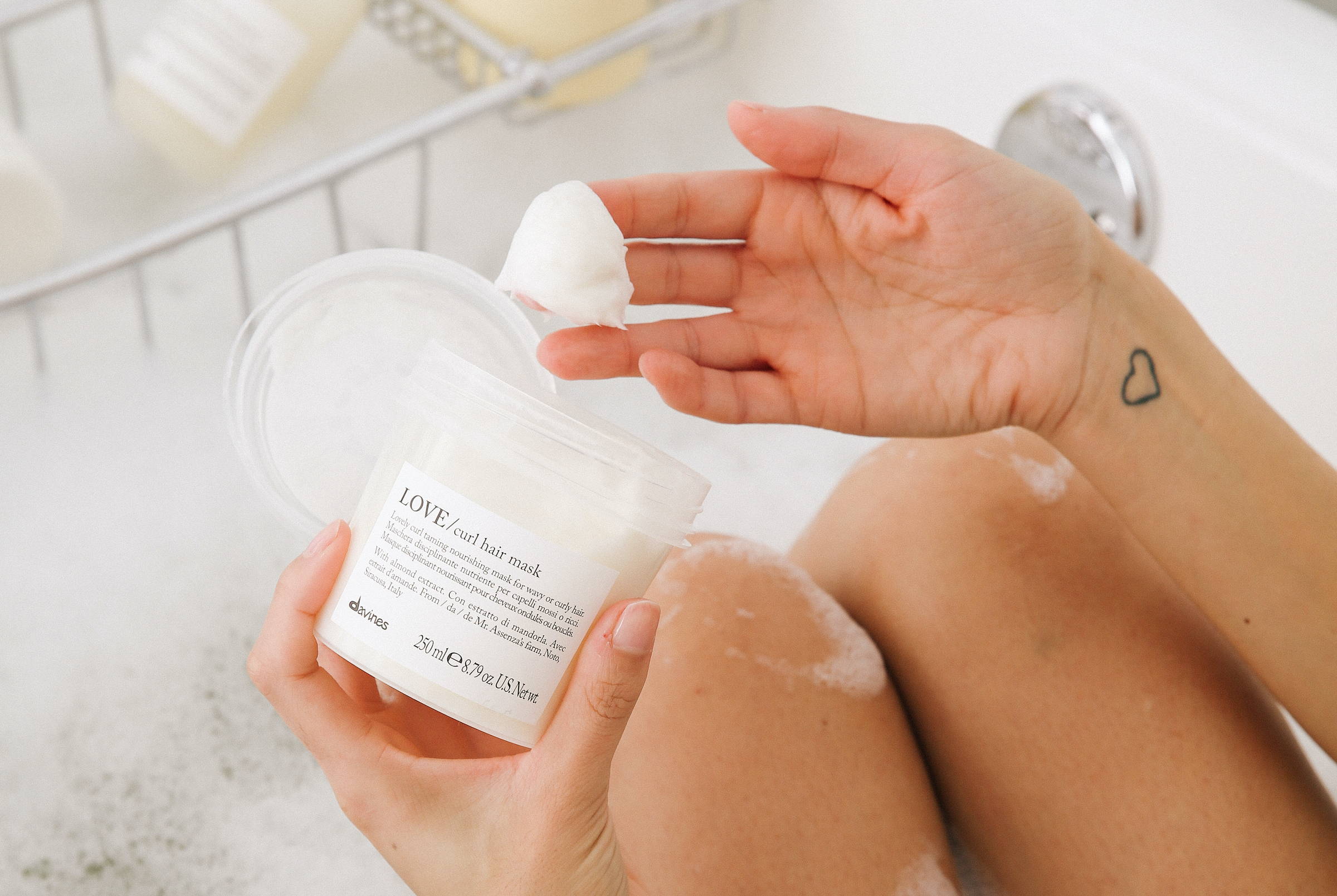Free Carbon Neutral Shipping On Orders $75+, Plus Free Samples!
Buy Now and Pay Later in 4-interest free installments with Klarna
Free Carbon Neutral Shipping On Orders $75+, Plus Free Samples!
Buy Now and Pay Later in 4-interest free installments with Klarna
Rendre la beauté durable
We Are Circular
Lien vers vos collections, vos ventes et même des liens externes.
Refer Your Friends and Get a Free Gift!
Curly hair can be as challenging as it is charming. The natural texture and structure of frizzy, curly or otherwise texturized hair makes it more prone to dryness and damage. That’s why caring for those lovely, yet often unruly, locks is so important.
Depending on your length, hair condition and curl pattern, your hair care routine requires a unique approach. This is where things like deep conditioning treatments, hair oils and hair masks come in. Deep conditioning is a crucial step in any curly girl’s hair care routine as it helps restore moisture, enhance curl definition and promote overall hair health. Say hello to fabulous, hydrated curls with our guide to getting it right.
Deep conditioning is a fundamental practice that can transform your hair from dry, brittle and damaged to soft, shiny and manageable. Beyond the regular shampoo and conditioner routine, deep conditioning is a specialized treatment, with a heavier concentration than regular daily conditioner, that penetrates deeper into the hair to provide extra nourishment. It takes added effort and time because your hair needs the chance to effectively absorb all the nutrients and moisture into the hair shaft. But once it does, the added moisture is a miracle for shine, detangling, softness and overall manageability. All in, deep conditioning at least once per week for curly hair is a game changer.

Curly hair is a unique and beautiful hair type to be sure, but it is naturally drier (read: prone to frizz and tangles) than straight hair and therefore requires special care to keep it looking its best.
The structure of curly hair is characterized by its natural coiled or spiral shape, which is determined by the shape of the hair follicle. The follicles of straight hair are perfectly round, whereas the follicles of curly hair are oval in shape. The flatter the oval, the curlier the hair. There are other contributing aspects of the hair follicle that determine curl pattern, but for the sake of brevity, we’ll skip to the good stuff.
The curly shape affects the way sebum—the natural oil produced by the scalp—travels along the hair shaft. In curly hair, sebum has a harder time moving from the scalp to the ends (as opposed to with straight hair), making curly hair more susceptible to dryness. Why does dryness matter? Without moisture, your hair loses its luster, bounce and shine, and split ends can start to occur more frequently. Especially for curly hair, the more moisture, the better. That’s why deep conditioning is crucial—for everyone, certainly—but much more so for those with curly hair.
With the plethora of curl products available, it can be overwhelming determining which one is best for your unique hair type, but choosing the right deep conditioner is crucial. First, consider whether your hair requires extra moisture, protein or both, and look for products that cater to those needs. Generally all hair types can likely benefit from a deep conditioning treatment, but if you have extra oily hair, you may want to steer clear.
There are many tailored deep conditioning methods out there to help you achieve the best results. For dry hair or coily, tight curls, applying the treatment super close to the root of the hair might be beneficial. Alternatively, if your hair tends to be oily, applying the deep conditioner to the middle of the hair shaft to the ends could be a better solution.
For the deep conditioner itself, look for ingredients like avocado oil, coconut oil and shea butter, and some of these ingredients can really work wonders on specific hair types. Highly textured hair could benefit from natural oils like coconut or shea butter, while anyone with thick hair might need richer ingredients like jojoba and argan oil.
To get started, make sure your hair is clean. After shampooing, towel dry your hair, but keep it wet. Then divide your hair into manageable sections (four is a good rule of thumb; eight for thicker hair) to ensure your entire head of hair is being treated. Apply the deep conditioner from the ends up to the roots. Starting from the ends puts the focus exactly there (the ends), on the driest part of your curls. Last, be patient. Leave the treatment in for 20 to 30 minutes to allow it to work its magic, then rinse.

To truly reap the benefits of deep conditioning, you must first start with a clean slate—or rather, scalp. The deep conditioner won’t penetrate your strands effectively if your hair and scalp is dirty. So take care to shampoo your hair properly before applying to rid your hair of any buildup. You might be wondering if co-washing would suffice, as ‘conditioner-only washing’ is something many curly-haired girls partake in, and the answer is yes, as long as your hair/scalp isn’t excessively dirty or greasy.
Lastly—and this is a pro tip—the deep conditioner works most effectively when you use heat to boost its effectiveness. Why? Heat opens hair follicles and aids in the absorption process, so the ingredients really get the chance to penetrate deep into the hair shaft. You can use steam for this, a shower cap, blow dryer or even a warm towel. Sit back, enjoy the warmth… and thank us later. Keep the deep conditioner on for the allotted time (again, 20-30 mins), then rinse with cool water.
After investing the time and effort into the game-changer of deep conditioning your hair, go the extra mile to ensure you’re maintaining its long-lasting benefits (aka keeping your hair healthy, soft and manageable).Consistency is key. Aim to deep condition your hair at least once a week as a starting point, but know that adjustments may be necessary. Depending on your curl type and porosity needs, your hair could do with more or less. If at any point your hair starts to feel excessively oily, you’re probably deep conditioning too frequently, for example, so back off if you’re experiencing that oily buildup.
Adding a deep conditioning treatment to your hair care routine, and doing it right, not only nourishes your curly hair, but repairs damage, prevents future issues like split ends and breakage and best of all, helps keep your hair in its best, most beautiful condition.
Start with once per week, but be flexible if your hair isn’t quite happy. Choose a product that works for your hair type, or try one of the many DIY recipes that use ingredients you probably already have at home like avocado, honey and olive oil, and build it into your routine. Now go get your deep conditioning on, and rock those locks. We’ll be doing the same.
by Morgan Hanson, featured contributor
S’abonner pour rester à l’affut des ventes et promotions, les lancements de nouveaux produits et bien plus…
Abonnez-vous à notre newsletter pour bénificier de la livraison gratuite sur votre première commande.
La soumission de ce formulaire confirme que vous acceptez de recevoir les avis de lancement, les promotions et les nouvelles marketing de Davines North America Inc. par courriel.



Laisser un commentaire
Les commentaires sont approuvés avant leur publication.